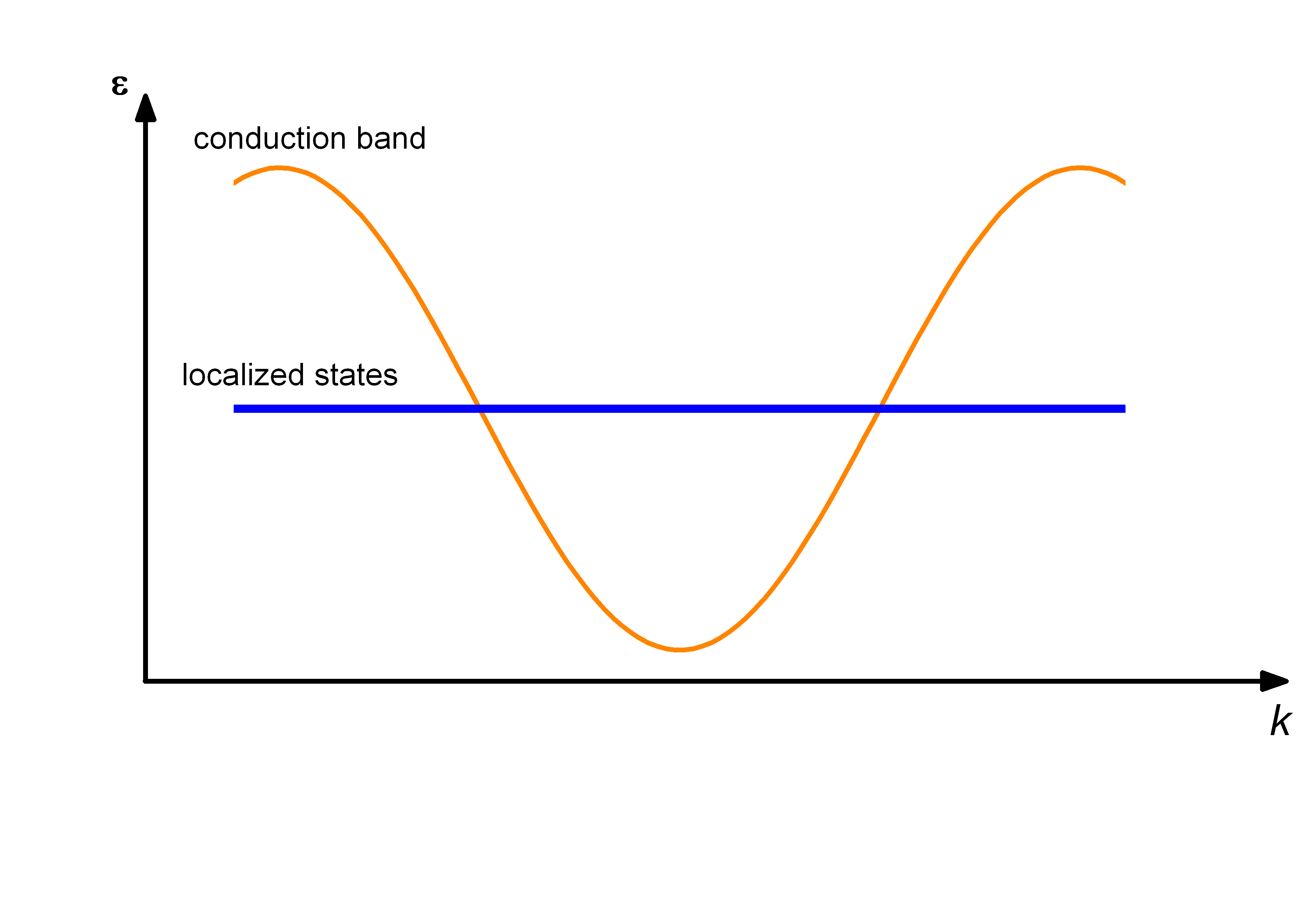Kondo Insulator on:
[Wikipedia]
[Google]
[Amazon]

 In
In

 In
In solid-state physics
Solid-state physics is the study of rigid matter, or solids, through methods such as quantum mechanics, crystallography, electromagnetism, and metallurgy. It is the largest branch of condensed matter physics. Solid-state physics studies how the l ...
, Kondo insulators
Insulator may refer to:
* Insulator (electricity), a substance that resists electricity
** Pin insulator, a device that isolates a wire from a physical support such as a pin on a utility pole
** Strain insulator, a device that is designed to work ...
(also referred as Kondo semiconductors
A semiconductor is a material which has an electrical resistivity and conductivity, electrical conductivity value falling between that of a electrical conductor, conductor, such as copper, and an insulator (electricity), insulator, such as glas ...
and heavy fermion
In solid-state physics, heavy fermion materials are a specific type of intermetallic compound, containing elements with 4f or 5f electrons in unfilled electron bands. Electrons are one type of fermion, and when they are found in such materials, th ...
semiconductors) are understood as materials with strongly correlated electrons, that open up a narrow band gap
In solid-state physics, a band gap, also called an energy gap, is an energy range in a solid where no electronic states can exist. In graphs of the electronic band structure of solids, the band gap generally refers to the energy difference (in ...
(in the order of 10 meV) at low temperatures with the chemical potential
In thermodynamics, the chemical potential of a species is the energy that can be absorbed or released due to a change of the particle number of the given species, e.g. in a chemical reaction or phase transition. The chemical potential of a species ...
lying in the gap, whereas in heavy fermion materials the chemical potential is located in the conduction band
In solid-state physics, the valence band and conduction band are the bands closest to the Fermi level, and thus determine the electrical conductivity of the solid. In nonmetals, the valence band is the highest range of electron energies in w ...
. The band gap opens up at low temperatures due to hybridization of localized electrons (mostly f-electrons) with conduction electrons, a correlation effect known as the Kondo effect
In physics, the Kondo effect describes the scattering of conduction electrons in a metal due to magnetic impurities, resulting in a characteristic change i.e. a minimum in electrical resistivity with temperature.
The cause of the effect was fir ...
. As a consequence, a transition from metallic behavior to insulating behavior is seen in resistivity measurements. The band gap could be either direct or indirect. Most studied Kondo insulators are FeSi, Ce3Bi4Pt3, SmB6, YbB12, and CeNiSn, although there are over a dozen known Kondo insulators.
Historical overview
In 1969, Menth ''et al.'' found no magnetic ordering in SmB6 down to 0.35 K and a change from metallic to insulating behavior in the resistivity measurement with decreasing temperature. They interpreted this phenomenon as a change of the electronic configuration of Sm. Gabriel Aeppli and Zachary Fisk found a descriptive way to explain the physical properties of Ce3Bi4Pt3 and CeNiSn in 1992. They called the materials Kondo insulators, showing Kondo lattice behavior near room temperature, but becoming semiconducting with very small energy gaps (a few Kelvin to a few tens of Kelvin) when decreasing the temperature.Transport properties
At high temperatures the localized f-electrons form independent local magnetic moments. According to the Kondo effect, the dc-resistivity of Kondo insulators shows a logarithmic temperature-dependence. At low temperatures, the local magnetic moments are screened by the sea of conduction electrons, forming a so-called Kondo resonance. The interaction of the conduction band with the f-orbitals results in a hybridization and an energy gap . If the chemical potential lies in the hybridization gap, an insulating behavior can be seen in the dc-resistivity at low temperatures. In recent times,angle-resolved photoemission spectroscopy
Angle-resolved photoemission spectroscopy (ARPES) is an experimental technique used in condensed matter physics to probe the allowed energies and momenta of the electrons in a material, usually a crystalline solid. It is based on the photoelec ...
experiments provided direct imaging of band-structure, hybridization and flat band topology in Kondo insulators and related compounds.
References
* * {{cite journal , last=Riseborough , first=Peter S. , title=Heavy fermion semiconductors , s2cid=119991477 , journal=Advances in Physics , publisher=Informa UK Limited , volume=49 , issue=3 , year=2000 , issn=0001-8732 , doi=10.1080/000187300243345 , pages=257–320, bibcode=2000AdPhy..49..257R Correlated electrons Condensed matter physics